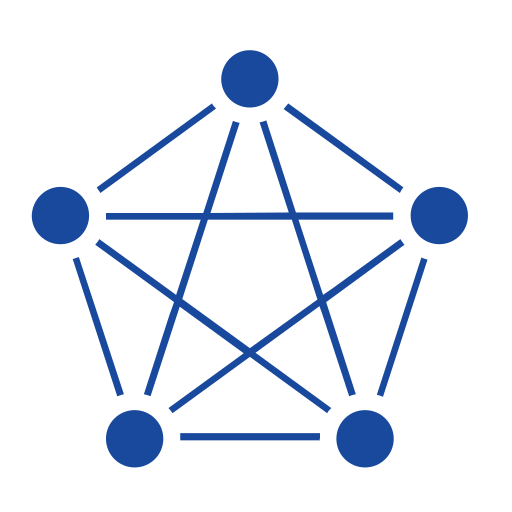Apache Druid vs TDengine
A detailed comparison
Compare Apache Druid and TDengine for time series and OLAP workloads
Learn About Time Series DatabasesChoosing the right database is a critical choice when building any software application. All databases have different strengths and weaknesses when it comes to performance, so deciding which database has the most benefits and the most minor downsides for your specific use case and data model is an important decision. Below you will find an overview of the key concepts, architecture, features, use cases, and pricing models of Apache Druid and TDengine so you can quickly see how they compare against each other.
The primary purpose of this article is to compare how Apache Druid and TDengine perform for workloads involving time series data, not for all possible use cases. Time series data typically presents a unique challenge in terms of database performance. This is due to the high volume of data being written and the query patterns to access that data. This article doesn't intend to make the case for which database is better; it simply provides an overview of each database so you can make an informed decision.
Apache Druid vs TDengine Breakdown
 |
 |
|
| Database Model | Columnar database |
Time series database |
| Architecture | Druid can be deployed on-premises, in the cloud, or using a managed service |
TDengine can be deployed on-premises, in the cloud, or as a hybrid solution, allowing flexibility in deployment and management. |
| License | Apache 2.0 |
AGPL 3.0 |
| Use Cases | Real-time analytics, OLAP, time series data, event-driven data, log analytics, ad tech, user behavior analytics |
IoT data storage, industrial monitoring, smart energy, smart home, monitoring and observability |
| Scalability | Horizontally scalable, supports distributed architectures for high availability and performance |
Horizontally scalable with clustering and built-in load balancing. TDengine also provides decoupled compute and storage as well as object storage support for data tiering in some versions |
Looking for the most efficient way to get started?
Whether you are looking for cost savings, lower management overhead, or open source, InfluxDB can help.
Apache Druid Overview
Apache Druid is an open-source, real-time analytics database designed for high-performance querying and data ingestion. Originally developed by Metamarkets in 2011 and later donated to the Apache Software Foundation in 2018, Druid has gained popularity for its ability to handle large volumes of data with low latency. With a unique architecture that combines elements of time series databases, search systems, and columnar storage, Druid is particularly well-suited for use cases involving event-driven data and interactive analytics.
TDengine Overview
TDengine is a high-performance, open source time series database designed to handle massive amounts of time series data efficiently. It was created by TAOS Data in 2017 and is specifically designed for Internet of Things (IoT), Industrial IoT, and IT infrastructure monitoring use cases. TDengine has a unique hybrid architecture that combines the advantages of both relational and NoSQL databases, providing high performance, easy-to-use SQL for querying, and flexible data modeling capabilities.
Apache Druid for Time Series Data
Apache Druid is designed for real time analytics and can be a good fit for working with time series data that needs to be analyzed quickly after being written. Druid also offers integrations for storing historical data in cheaper object storage so historical time series data can also be analyzed using Druid.
TDengine for Time Series Data
TDengine is designed from the ground up as a time series database, so it will be a good fit for most use cases that heavily involve storing and analyzing time series data.
Apache Druid Key Concepts
- Data Ingestion: The process of importing data into Druid from various sources, such as streaming or batch data sources.
- Segments: The smallest unit of data storage in Druid, segments are immutable, partitioned, and compressed.
- Data Rollup: The process of aggregating raw data during ingestion to reduce storage requirements and improve query performance.
- Nodes: Druid’s architecture consists of different types of nodes, including Historical, Broker, Coordinator, and MiddleManager/Overlord, each with specific responsibilities.
- Indexing Service: Druid’s indexing service manages the process of ingesting data, creating segments, and publishing them to deep storage.
TDengine Key Concepts
- Super Table: A template for creating multiple tables with the same schema. It’s similar to the concept of table inheritance in some other databases.
- Sub Table: A table created based on a Super Table, inheriting its schema. Sub Tables can have additional tags for categorization and querying purposes.
- Tag: A metadata attribute used to categorize and filter Sub Tables in a Super Table. Tags are indexed and optimized for efficient querying.
Apache Druid Architecture
Apache Druid is a powerful distributed data store designed for real-time analytics on large datasets. Within its architecture, several core components play pivotal roles in ensuring its efficiency and scalability. Here is an overview of the core components that power Apache Druid.
- Historical Nodes are fundamental to Druid’s data-serving capabilities. Their primary responsibility is to serve stored data to queries. To achieve this, they load segments from deep storage, retain them in memory, and then cater to the queries on these segments. When considering deployment and management, these nodes are typically stationed on machines endowed with significant memory and CPU resources. Their scalability is evident as they can be expanded horizontally simply by incorporating more nodes.
- Broker Nodes act as the gatekeepers for incoming queries. Their main function is to channel these queries to the appropriate historical nodes or real-time nodes. Intriguingly, they are stateless, which means they can be scaled out to accommodate an increase in query concurrency.
- Coordinator Nodes have a managerial role, overseeing the data distribution across historical nodes. Their decisions on which segments to load or drop are based on specific configurable rules. In terms of deployment, a Druid setup usually requires just one active coordinator node, with a backup node on standby for failover scenarios.
- Overlord Nodes dictate the assignment of ingestion tasks, directing them to either middle manager or indexer nodes. Their deployment mirrors that of the coordinator nodes, with typically one active overlord and a backup for redundancy.
- MiddleManager and Indexer Nodes are the workhorses of data ingestion in Druid. While MiddleManagers initiate short-lived tasks for data ingestion, indexers are designed for long-lived tasks. Given their intensive operations, these nodes demand high CPU and memory resources. Their scalability is flexible, allowing horizontal expansion based on the volume of data ingestion.
- Deep Storage is a component that serves as Druid’s persistent storage unit. Druid integrates with various blob storage solutions like HDFS, S3, and Google Cloud Storage.
- Metadata Storage is the repository for crucial metadata about segments, tasks, and configurations. Druid is compatible with popular databases for this purpose, including MySQL, PostgreSQL, and Derby.
TDengine Architecture
TDengine uses a cloud native architecture that combines the advantages of relational databases (support for SQL querying) and NoSQL databases (scalability and flexibility).
Free Time-Series Database Guide
Get a comprehensive review of alternatives and critical requirements for selecting yours.
Apache Druid Features
Data Ingestion
Apache Druid supports both real-time and batch data ingestion, allowing it to process data from various sources like Kafka, Hadoop, or local files. With built-in support for data partitioning, replication, and roll-up, Druid ensures high availability and efficient storage.
Scalability and Performance
Druid is designed to scale horizontally, providing support for large-scale deployments with minimal performance degradation. Its unique architecture allows for fast and efficient querying, making it suitable for use cases requiring low-latency analytics.
Columnar Storage
Druid stores data in a columnar format, enabling better compression and faster query performance compared to row-based storage systems. Columnar storage also allows Druid to optimize queries by only accessing relevant columns.
Time-optimized Indexing
Druid’s indexing service creates segments with time-based partitioning, optimizing data storage and retrieval for time-series data. This feature significantly improves query performance for time-based queries. Data Rollups
Druid’s data rollup feature aggregates raw data during ingestion, reducing storage requirements and improving query performance. This feature is particularly beneficial for use cases involving high-cardinality data or large volumes of similar data points.
TDengine Features
Data ingestion
TDengine supports high-speed data ingestion, with the ability to handle millions of data points per second. It supports batch and individual data insertion.
Data querying
TDengine provides ANSI SQL support with additional that allows users to easily query time series data using familiar SQL syntax. It supports various aggregation functions, filtering, and joins.
Data retention and compression
TDengine automatically compresses data to save storage space and provides data retention policies to automatically delete old data.
Apache Druid Use Cases
Geospatial Analysis
Apache Druid provides support for geospatial data and queries, making it suitable for use cases that involve location-based data, such as tracking the movement of assets, analyzing user locations, or monitoring the distribution of events. Its ability to efficiently process large volumes of geospatial data enables users to gain insights and make data-driven decisions based on location information.
Machine Learning and AI
Druid’s high-performance data processing capabilities can be leveraged for preprocessing and feature extraction in machine learning and AI workflows. Its support for real-time data ingestion and low-latency querying make it suitable for use cases that require real-time predictions or insights, such as recommendation systems or predictive maintenance.
Real-Time Analytics
Apache Druid’s low-latency querying and real-time data ingestion capabilities make it an ideal solution for real-time analytics use cases, such as monitoring application performance, user behavior, or business metrics.
TDengine Use Cases
IoT data storage and analysis
TDengine is designed to handle massive amounts of time series data generated by IoT devices. Its high-performance ingestion, querying, and storage capabilities make it a suitable choice for IoT data storage and analysis.
Industrial IoT monitoring
TDengine can be used to store and analyze data from industrial IoT sensors and devices, helping organizations monitor equipment performance, detect anomalies, and optimize operations.
Infrastructure Monitoring
TDengine can be used to collect and analyze time series data from IT infrastructure components, such as servers, networks, and applications, facilitating real-time monitoring, alerting, and performance optimization.
Apache Druid Pricing Model
Apache Druid is an open source project, and as such, it can be self-hosted at no licensing cost. However, organizations that choose to self-host Druid will incur expenses related to infrastructure, management, and support when deploying and operating Druid in their environment. These costs will depend on the organization’s specific requirements and the chosen infrastructure, whether it’s on-premises or cloud-based.
For those who prefer a managed solution, there are cloud services available that offer Apache Druid as a managed service, such as Imply Cloud. With managed services, the provider handles infrastructure, management, and support, simplifying the deployment and operation of Druid. Pricing for these managed services will vary depending on the provider and the selected service tier, which may include factors such as data storage, query capacity, and data ingestion rates.
TDengine Pricing Model
TDengine is open source and free to use under the AGPLv3 license. TDengine also offers commercial licenses and enterprise support options for organizations that require additional features, support, or compliance with specific licensing requirements.
Get started with InfluxDB for free
InfluxDB Cloud is the fastest way to start storing and analyzing your time series data.
